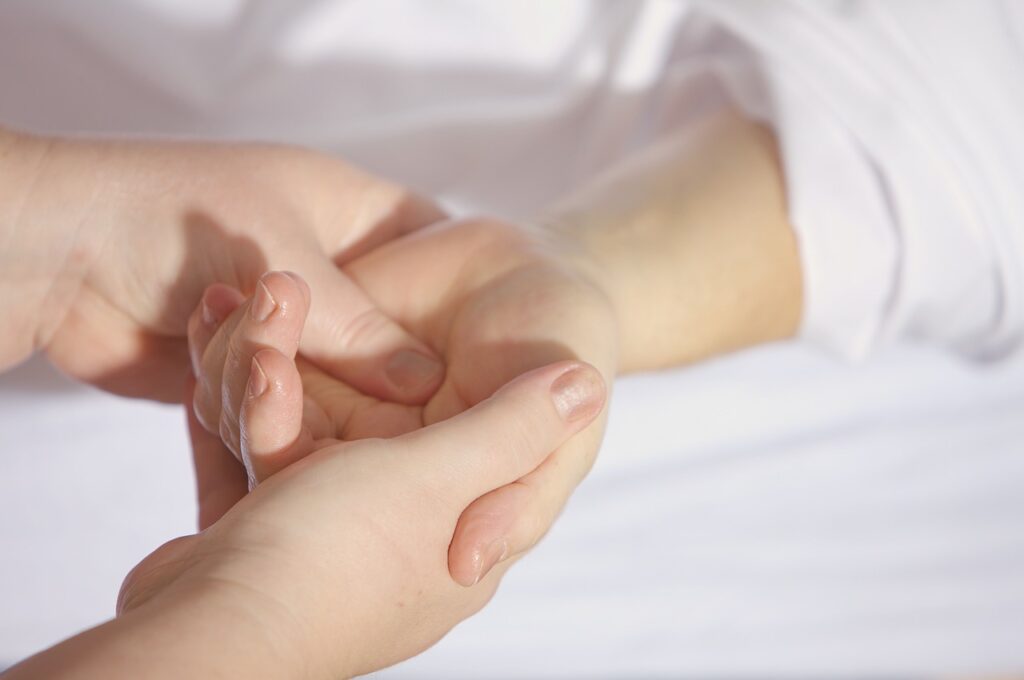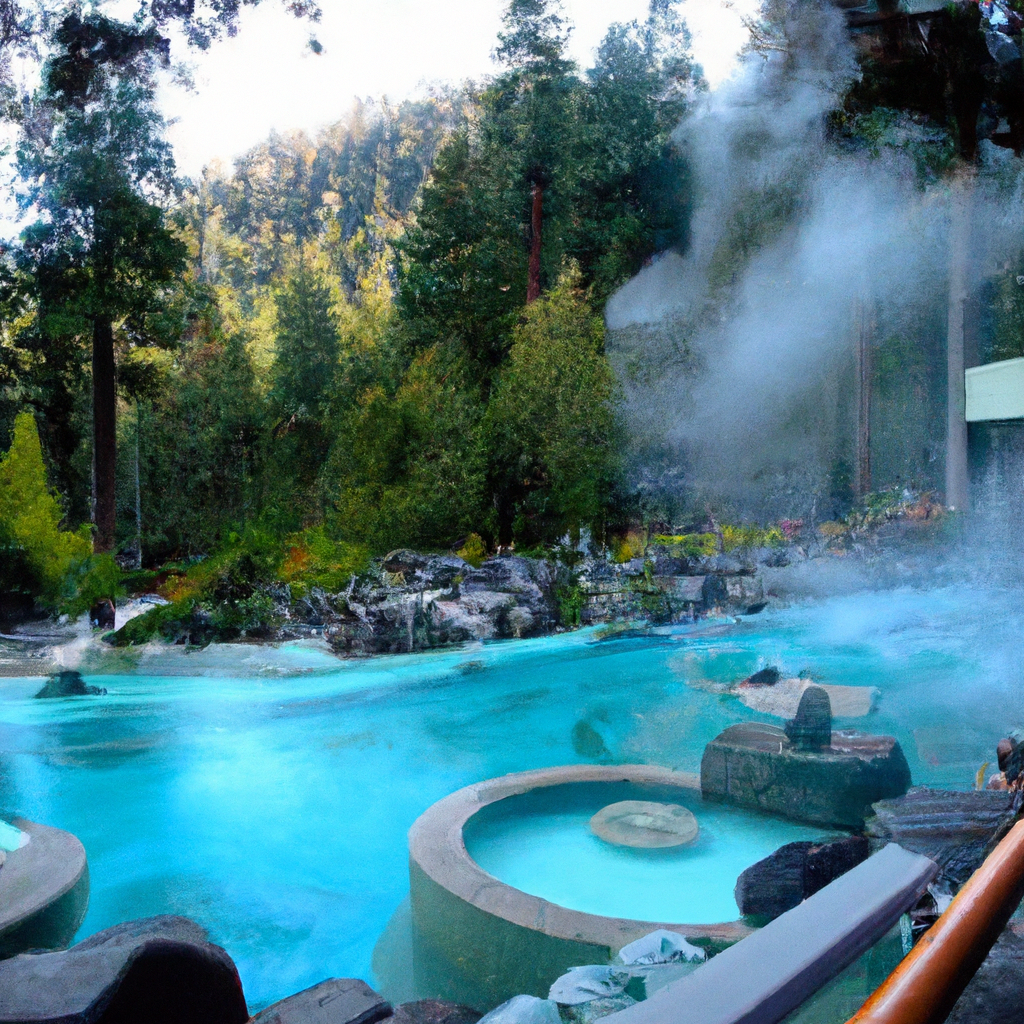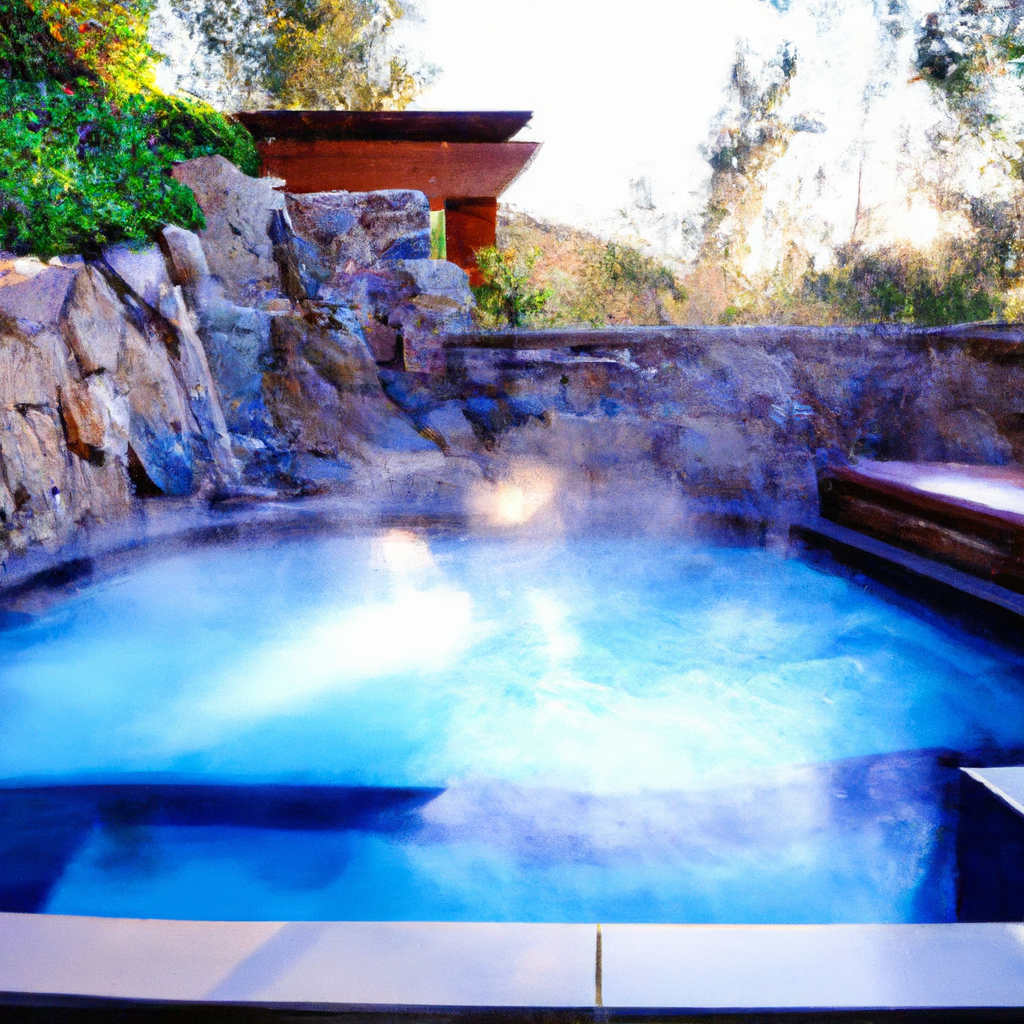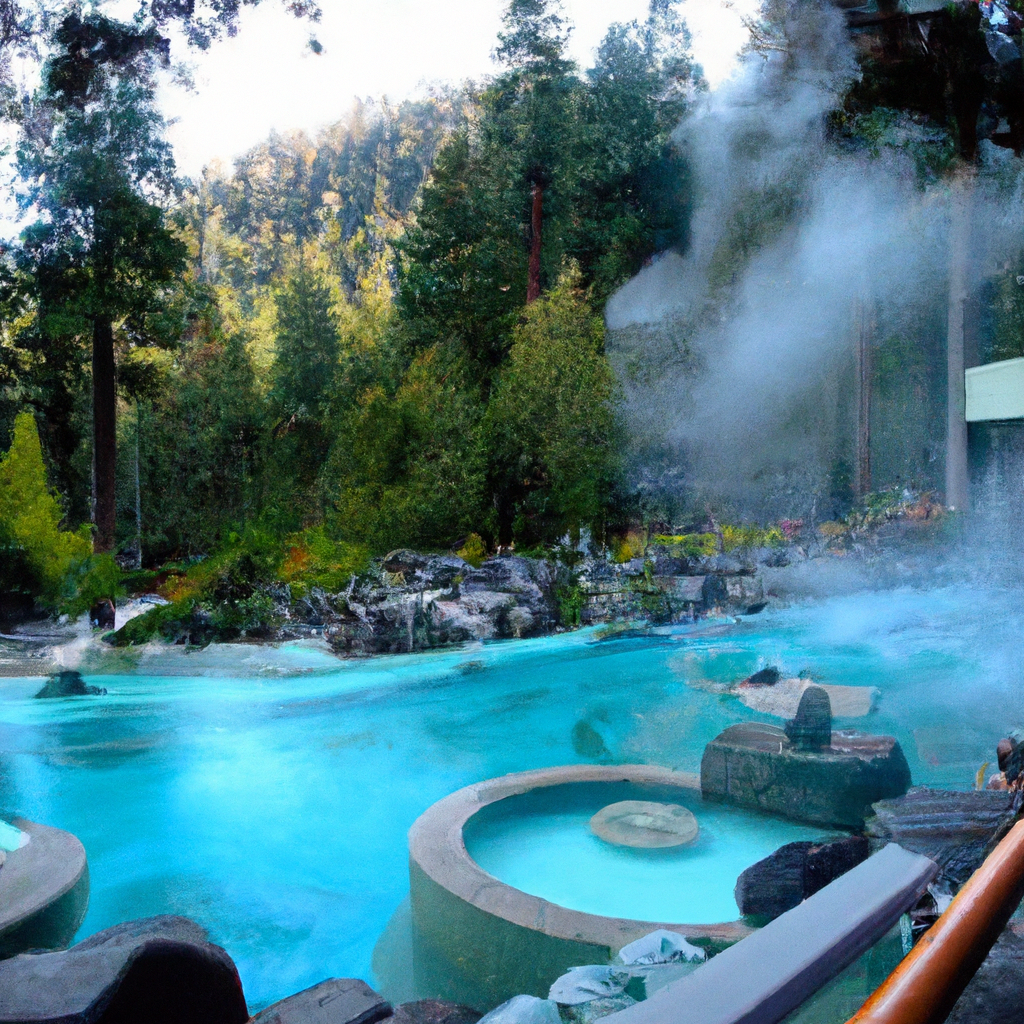Transform your home into a soothing oasis with a DIY spa inspired by the healing properties of natural hot springs. Discover the secrets to recreating the blissful experience of soaking in warm, mineral-rich waters right in the comfort of your own bathroom. From choosing the right materials and incorporating calming scents to selecting the perfect lighting and creating a serene ambiance, this article will guide you through every step of the process. Say goodbye to stress and say hello to ultimate relaxation as you indulge in a truly rejuvenating spa experience from the convenience of your home. Do you dream of having a peaceful retreat in the comfort of your own home? Creating a home spa inspired by natural hot springs is the perfect way to relax, rejuvenate, and indulge in some self-care. Not only can it offer numerous benefits for your mind and body, but it also provides a luxurious experience that will leave you feeling pampered and refreshed. In this article, we will explore the benefits of natural hot springs, offer tips on choosing the right space for your home spa, discuss design and decor ideas, walk you through the process of creating a hot spring experience at home, provide DIY spa treatments, guide you in building a sauna, introduce hydrotherapy techniques, suggest indoor plants for purifying air and enhancing relaxation, and help you ensure safety and hygiene in your home spa. By the end, you will have all the information you need to bring the spa experience to your doorstep and create a haven of tranquility.
1/diy-setting-up-a-home-spa-inspired-by-natural-hot-springs-1024x502.jpg" title="DIY: Setting Up A Home Spa Inspired By Natural Hot Springs" alt="DIY: Setting Up A Home Spa Inspired By Natural Hot Springs" style="max-height: 500px; max-width: 100%;" />
Benefits of Natural Hot Springs
When you think of hot springs, relaxation and stress relief are probably the first things that come to mind. And rightfully so! Soaking in warm water can have a profound effect on reducing stress and promoting relaxation. The heat helps to relax your muscles, calm your mind, and release tension, leaving you feeling rejuvenated and at peace.
In addition to relaxation, natural hot springs offer several other benefits. Improved blood circulation is one of them. The warm water causes blood vessels to dilate, which allows for better blood flow throughout your body. This not only promotes cardiovascular health but also helps in delivering oxygen and nutrients to your tissues, resulting in improved overall health.
Detoxification is another advantage of soaking in hot springs. The high temperature of the water causes your body to sweat, helping to rid it of toxins and impurities. The minerals present in the water, such as sulfur, can also have detoxifying effects, further aiding in the cleansing process.
If you’re looking for a natural way to rejuvenate your skin, look no further than hot springs. The minerals and trace elements found in the water can nourish and revitalize your skin, leaving it looking radiant and youthful. The heat also opens up your pores, allowing for deep cleansing and improved absorption of skincare products.
Lastly, hot springs can provide relief from muscle and joint pain. The warm water helps to soothe aching muscles, reduce inflammation, and promote healing. Whether you suffer from arthritis, muscle stiffness, or sports injuries, regular soaks in hot springs can offer relief and improve your quality of life.
With all these incredible benefits, it’s no wonder that creating a home spa inspired by natural hot springs is a popular choice for relaxation and rejuvenation.
Choosing the Right Space for Your Home Spa
When transforming a space in your home into a spa, there are several considerations to keep in mind. The first decision you’ll need to make is whether you want an indoor or outdoor spa. Both options have their advantages.
An indoor spa offers privacy and the convenience of year-round use, regardless of the weather. It allows you to create a spa-like oasis in a controlled environment, shielded from the elements. On the other hand, an outdoor spa allows you to immerse yourself in nature and enjoy the fresh air while you relax. The surrounding garden or landscape can enhance the ambiance and provide a tranquil setting.
Space and budget are also crucial factors to consider. The size of the space you have available will determine the type and size of the spa you can install. Additionally, your budget will dictate the level of customization and luxury you can incorporate into your home spa. Keep in mind that splurging on high-quality materials and features can enhance your spa experience and add value to your home.
Privacy is another critical consideration for your home spa. You’ll want to ensure that you can truly relax and unwind without feeling exposed or observed. Consider utilizing natural barriers, such as tall plants or screens, to create a secluded space. If privacy is a top priority, an indoor spa may be the best option.
To maintain a peaceful ambiance in your home spa, careful attention must be given to the overall design and decor of the space. Let’s dive into some tips on how to achieve a spa-like atmosphere in your own home.
Design and Decor
To create a home spa inspired by natural hot springs, incorporating natural elements and materials is essential. Opt for wood, stone, or bamboo to bring a touch of nature indoors. These materials not only add a sense of tranquility but also provide durability and a timeless aesthetic.
When selecting colors for your spa, opt for soothing, spa-like hues. Soft blues, greens, and earthy tones are popular choices that evoke a sense of calmness and relaxation. Avoid vibrant or jarring colors that may distract from the peaceful atmosphere you are trying to achieve.
Comfort is key when it comes to seating and lounging areas in your home spa. Choose comfortable, ergonomic furniture that allows you to fully relax and unwind. Consider including plush loungers, cozy armchairs, and soft cushions to create a haven of relaxation.
Lighting plays a crucial role in creating the right ambiance. Soft, warm lighting can help to create a soothing atmosphere and induce a sense of calm. Incorporate dimmers to adjust the intensity of the lights, allowing you to create the perfect lighting for your spa experience. Additionally, candles can add a touch of romance and create a gentle, flickering glow.
By paying attention to the design and decor aspects of your home spa, you can create a space that truly feels like an oasis of relaxation and serenity.
The Hot Spring Experience at Home
Creating a hot spring experience at home involves several key elements that will help to replicate the soothing and therapeutic effects of natural hot springs. Let’s explore the essential components of a home spa inspired by hot springs.
Installing a hot tub or jacuzzi is the cornerstone of your home spa. These features provide the warm, hydrotherapy soak that is reminiscent of natural hot springs. Choose a model that suits your space and budget, ensuring it has the desired features such as jets, adjustable temperature controls, and comfortable seating arrangements. Hot tubs and jacuzzis come in a variety of sizes and designs, making it easy to find the perfect fit for your home spa.
While natural hot springs are known for their mineral-rich water, replicating this exact composition at home can be challenging. However, you can still enhance the therapeutic effects of your spa water by sourcing natural spring water as a base. Natural spring water contains various minerals and trace elements that can offer additional health benefits and promote relaxation.
To further enhance your spa water, consider using natural mineral additives. These additives are available in various forms, such as bath salts or minerals drops, and can be added to your spa water for additional healing and rejuvenating properties. Minerals like Epsom salt, Dead Sea salt, and magnesium flakes can help soothe muscles, reduce inflammation, and promote relaxation.
Creating water jets and bubble features in your hot tub can maximize the hydrotherapy experience. These features help to stimulate blood circulation, massage sore muscles, and relax your body. Look for a hot tub model that offers customizable jet settings and bubble options, allowing you to tailor the experience to your preferences.
Temperature control is a crucial factor in recreating the hot spring experience at home. Just like natural hot springs, your spa water temperature should be warm enough to help relax your muscles, open your pores, and induce a sense of tranquility. However, it’s important to find a temperature that is comfortable and safe for you. Consult the manufacturer’s guidelines and adjust the temperature to suit your preferences and needs.
By incorporating these elements, you can recreate the therapeutic and soothing effects of natural hot springs in the comfort of your own home.

DIY Spa Treatments
While having a home spa is wonderful for relaxation, it’s equally exciting to pamper yourself with DIY spa treatments. Stock up on some essential ingredients and indulgent products to create your own spa-like experience at home. Here are a few DIY spa treatments to get you started.
Natural face masks and scrubs can do wonders for your skin. Use ingredients like honey, yogurt, oatmeal, and essential oils to create nourishing and exfoliating masks. These natural ingredients are gentle on the skin and help to remove impurities while leaving your complexion glowing.
Aromatherapy with essential oils is a fantastic way to elevate your spa experience. Essential oils such as lavender, eucalyptus, and chamomile have calming and rejuvenating properties. Add a few drops to your bathwater, use them in a diffuser, or simply inhale the scent for an instant mood boost.
Body exfoliation and detoxification are essential for maintaining healthy and radiant skin. Create your own body scrubs using ingredients like sugar, sea salt, or coffee grounds mixed with oils such as coconut or almond. Gently massage the scrub onto your body to slough away dead skin cells and reveal smooth, glowing skin.
Relaxing baths with Epsom salts can help relieve muscle tension and promote relaxation. Add a cup or two of Epsom salts to warm bathwater and soak for at least 20 minutes. The magnesium in Epsom salts can help reduce inflammation, ease muscle aches, and improve sleep quality.
Don’t forget about your feet! Foot soaks and massages are a wonderful way to unwind and pamper yourself. Fill a basin with warm water and add Epsom salts, essential oils, or a foot soak powder. Soak your feet for 15-20 minutes, then gently massage them with a nourishing foot cream or oil. Not only will this leave your feet feeling refreshed, but it can also help alleviate tension and promote relaxation throughout your entire body.
By incorporating these DIY spa treatments into your routine, you can turn your home spa into a full-service wellness sanctuary.
Building a Sauna
If you’re looking to take your home spa to the next level, consider building a sauna. Saunas offer numerous health benefits, including detoxification, relaxation, improved blood circulation, and respiratory benefits. Building a sauna may require some planning and construction, but the rewards are well worth it. Here are the key components to consider when building a sauna.
Choosing the right sauna type is the first step. There are several types available, including traditional saunas, infrared saunas, and steam saunas. Traditional saunas use hot rocks and water to create steam, while infrared saunas use infrared heaters to heat the body directly. Steam saunas, as the name suggests, produce steam by pouring water over heated rocks. Research each type and choose the one that best suits your needs and preferences.
Proper ventilation is essential for a sauna. Without proper air circulation, the heat and steam can become uncomfortable and potentially harmful. Make sure your sauna has appropriate ventilation to allow fresh air to circulate and maintain a comfortable environment.
Installing wooden benches is crucial for a sauna. Wooden benches not only offer a place to sit and relax but also help to retain heat and create a traditional sauna ambiance. Choose a wood type that is suitable for saunas, such as cedar or hemlock, as these woods can withstand high temperatures and humidity.
Selecting sauna stones is an important step in building a sauna. The stones will be heated and used to create steam in traditional saunas. Choose stones specifically designed for sauna use, as they can withstand extreme temperatures and retain heat effectively. Consult with a sauna expert or supplier to ensure you select the right stones for your sauna.
Maintenance and safety are vital considerations when building and operating a sauna. Regularly clean and sanitize your sauna to prevent the growth of bacteria or mold. Follow safety instructions and guidelines to ensure a safe and enjoyable sauna experience. It’s also important to stay hydrated and listen to your body; if you feel uncomfortable or lightheaded, exit the sauna and cool down.
With proper planning and attention to detail, you can bring the therapeutic benefits of saunas into your home spa and enjoy a truly indulgent experience.

Hydrotherapy Techniques
Hydrotherapy is the use of water for therapeutic purposes, and it has been practiced for centuries. Incorporating hydrotherapy techniques into your home spa routine can provide additional health benefits and elevate your spa experience. Let’s explore some hydrotherapy techniques you can enjoy at home.
Contrast baths involve alternating between hot and cold water to stimulate blood circulation and promote overall relaxation. Fill two basins or tubs, one with comfortably warm water and the other with cold water. Start with immersing your body in warm water for a few minutes, then switch to cold water for a brief period. Continue alternating between hot and cold water several times, always ending with cold water. This technique can help reduce inflammation, relieve muscle soreness, and invigorate your body.
Hydro massage is another hydrotherapy technique that combines the benefits of water and massage. Many hot tubs and jacuzzis are equipped with powerful jets that provide a therapeutic massage experience. Position yourself in front of the jets and allow the water pressure to target specific areas of your body, such as your back, neck, or feet. The combination of warm water and massage can help relax muscles, alleviate tension, and promote overall well-being.
Swimming and water exercises can be a wonderful way to stay active and reap the benefits of hydrotherapy. Whether you have access to a pool or enjoy water exercises in your hot tub, the buoyancy of water reduces the impact on your joints while providing resistance for a low-impact workout. Swimming can strengthen your cardiovascular system, improve muscle tone, and relieve stress. Consider incorporating swimming laps or water aerobics into your home spa routine.
Hot and cold compresses are a simple yet effective hydrotherapy technique that can offer immediate relief for various ailments. Applying a hot compress relaxes muscles, reduces pain, and promotes circulation. Similarly, a cold compress can help reduce inflammation, numb pain, and reduce swelling. Whether you’re dealing with muscle soreness, headaches, or menstrual cramps, hot and cold compresses can provide quick and soothing relief.
By incorporating these hydrotherapy techniques into your home spa routine, you can enjoy a customizable and therapeutic water experience that rivals the benefits of natural hot springs.
Indoor Plants for Purifying Air and Enhancing Relaxation
Incorporating indoor plants into your home spa not only improves the aesthetic appeal but also enhances air quality and promotes relaxation. Indoor plants have been proven to purify the air by removing toxins and releasing oxygen. Additionally, the presence of greenery can have a calming effect on the mind and help create a serene atmosphere. Let’s explore some indoor plants that are perfect for purifying air and enhancing relaxation in your home spa.
Benefits of indoor plants extend beyond their visual appeal. They have been shown to improve air quality by removing harmful compounds such as formaldehyde, benzene, and ammonia. They also release oxygen and increase humidity, making the air healthier to breathe. By incorporating indoor plants into your home spa, you can create a clean and rejuvenating environment.
When selecting indoor plants for your home spa, it’s important to consider low-maintenance and air-purifying plants. Some popular choices include snake plants, peace lilies, spider plants, and pothos. These plants require minimal care and can thrive in various lighting conditions. They have also been recognized by NASA’s Clean Air Study for their ability to remove toxins from the air, making them perfect for your home spa sanctuary.
Arranging plants strategically in your home spa can enhance the overall design and create a soothing atmosphere. Consider placing larger plants in the corners or against walls to create a natural, calming backdrop. Smaller plants can be used to fill empty spaces and add touches of greenery throughout the space. Experiment with different plant arrangements to find the layout that best suits your aesthetic and promotes relaxation.
For an added touch of tranquility and sophistication, consider creating a soothing mini-garden in your home spa. A zen garden or a terrarium can serve as a focal point and provide a serene escape within your spa oasis. Choose plants that thrive in the enclosed environment and require minimal maintenance, such as air plants or succulents. Add stones, sand, or small decorative elements to complete the look and create a miniature paradise.
By adding indoor plants to your home spa, you’ll not only beautify the space but also enjoy improved air quality and a connection to nature. The presence of plants can enhance your spa experience and create a harmonious environment for relaxation and rejuvenation.

Ensuring Safety and Hygiene
While creating your own home spa is undoubtedly exciting, it’s important to prioritize safety and hygiene to ensure a worry-free and enjoyable experience. Here are some vital tips to keep in mind when it comes to safety and hygiene in your home spa.
Regular water testing and maintenance are essential for keeping your spa water clean and safe. Test the water regularly to maintain the proper pH balance and ensure the appropriate levels of sanitizer, such as chlorine or bromine. Follow the manufacturer’s guidelines for water testing and maintenance, or consult a professional if needed. By keeping the water clean and balanced, you’ll prevent the growth of harmful bacteria and maintain safe conditions for soaking.
Maintaining cleanliness in your spa area is crucial for a hygienic and enjoyable experience. Clean the surfaces, including the tub or sauna, regularly using approved cleaning agents and follow the manufacturer’s instructions. Ensure that towels, robes, and other fabrics are washed regularly to prevent bacterial growth. By maintaining a clean environment, you’ll enjoy a more pleasant and healthy spa experience.
Proper ventilation and humidity control are important factors to consider in your home spa. Adequate ventilation helps to circulate fresh air, remove excess moisture, and maintain a comfortable environment. Consult a professional if necessary to ensure proper ventilation in your spa area. Additionally, control the humidity level in your spa to prevent the growth of mold or mildew. Use dehumidifiers or exhaust fans to keep the humidity at a safe and comfortable level.
Ensuring electrical safety is paramount when it comes to your home spa. If your spa requires electrical connections, it’s important to follow safety guidelines and consult a certified electrician for installation. Check that all electrical components are in good working condition and have the appropriate safety mechanisms. Keep electrical outlets and cords away from water to prevent the risk of electrocution. By prioritizing electrical safety, you can enjoy your home spa without worry.
Following safety instructions and guidelines for any equipment or products used in your home spa is essential. Whether it’s the hot tub, sauna, or spa treatments, carefully read and understand all safety instructions provided by the manufacturer. Never exceed recommended usage times, temperatures, or quantities of products. By following safety guidelines, you can ensure a safe and enjoyable spa experience for yourself and your loved ones.
By prioritizing safety and hygiene in your home spa, you can enjoy the benefits and relaxation without any concerns. Take the necessary precautions, stay informed, and create a safe space where you can truly unwind and rejuvenate.
Bringing the Spa Experience Home: Mind and Body
Creating a home spa is not just about the physical space and treatments; it’s also about nurturing your mind and body. By incorporating mindful practices and self-care routines, you can elevate your home spa experience and truly reap the benefits of relaxation and rejuvenation. Let’s explore different ways to bring the spa experience home and create a holistic mind-body connection.
Mindfulness and relaxation techniques are integral to the spa experience. Take the time to be fully present and immerse yourself in the moment. Engage your senses by focusing on the sensations, scents, and sounds around you. Practice deep breathing, consciously slow down your thoughts, and let go of any stress or worries. By cultivating mindfulness, you can enhance the benefits of your spa treatments and quiet your mind.
Connecting with nature can have a profound impact on our well-being. If you have an outdoor spa, take advantage of the natural surroundings and immerse yourself in the beauty of your garden or landscape. If you have an indoor spa, consider adding elements of nature, such as indoor plants or a soothing water feature. Spending time in nature, even in a small way, can help reduce stress, increase happiness, and improve overall well-being.
Benefits of meditation and deep breathing cannot be overstated. Incorporating a meditation practice into your home spa routine can help reduce stress, improve focus, and promote a sense of calm. Find a comfortable spot in your spa area, light a scented candle or use essential oils, and allow yourself to let go and be present. Start with just a few minutes, gradually increasing the duration as you become more comfortable. The benefits of meditation will extend beyond your spa experience and positively impact all aspects of your life.
Incorporating yoga or stretching exercises into your spa routine can help improve flexibility, release tension, and promote overall well-being. Create a designated area in your spa space for yoga or stretching, and consider using soft mats or cushions for added comfort. There are numerous online resources and videos available that can guide you through yoga sequences, even if you are a beginner. Joining a yoga class or hiring a private instructor can also be beneficial if you prefer personalized guidance.
Creating a self-care routine is crucial for nurturing your mind and body on a daily basis. Dedicate time each day to take care of yourself, whether it’s through a warm bath, applying a facial mask, indulging in a good book, or practicing gratitude and journaling. By prioritizing self-care, you can maintain balance, reduce stress, and cultivate a positive mindset.
By incorporating these mindful practices and self-care routines into your home spa experience, you can nurture your mind and body, create a deeper sense of relaxation, and promote overall well-being.
In conclusion, creating a home spa inspired by natural hot springs is a wonderful way to transform your living space into a haven of relaxation and rejuvenation. Whether you opt for an indoor or outdoor spa, pay attention to design and decor, install a hot tub or jacuzzi, or even build a sauna, you can recreate the therapeutic and invigorating effects of natural hot springs. By incorporating DIY spa treatments, hydrotherapy techniques, indoor plants, and prioritizing safety and hygiene, you can elevate your spa experience and create a space that promotes relaxation and holistic well-being. So go ahead, bring the spa experience home, and indulge in the luxury of self-care and tranquility. You deserve it!

